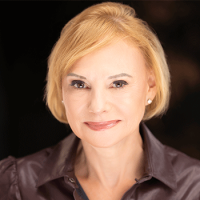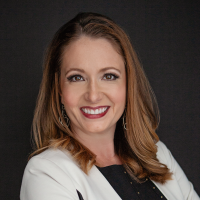Women and War: Securing a More Peaceful Future
“Conflicts are 35 percent more likely to be resolved and remain peaceful for 15 years if women are involved,” said Carla Koppell, vice president of the Center for Applied Conflict Transformation at the United States Institute of Peace, at a recent Wilson Center event on the role of women in war, security, and peace.
At the same time, complex conflicts like the Lake Chad crisis have roots in the very youthful populations and growing demand for scarce resources in high-fertility regions like the Sahel, said Sherri Goodman, former U.S. Deputy Under Secretary of Defense for Environmental Security and a senior fellow at the Wilson Center.
The panel of experts on women, peace and security discussed the barriers—including the lack of access to reproductive health services and childcare—that block women’s participation in security decision making and recommended ways to help countries realize the peace dividends of empowering women.
How Empowered Are We, Really? The Sexual Political Order
“The first political order is the sexual political order,” said Valerie M. Hudson, director of the Program on Women, Peace, and Security at Texas A&M University, where she is the George H.W. Bush Chair of the Bush School of Government and Public Service. “The relationship between the two halves of society—men and women—molds the society, its governance, and its behavior,” through four political dimensions: (1) status, (2) decision making, (3) conflict resolution, and (4) resource distribution.
In a society where men dominate decision making, control resources, and use violent coercion, “women will not be able to influence security decision making because the ‘security provision mechanism’ of the society, itself, is based on specifically disempowering women,” said Hudson.
In these societies, even women who have reached the highest levels of government can still be subject to men’s control. As one of the first female parliamentary members of Afghanistan told Hudson: “I could go home today, and my husband could divorce me...if my husband divorced me, where would I go in my society? Where could I be safe?”
“How empowered am I...really?” she asked.
Hudson identified eleven factors her WomanStats project uses to measure the situation of women: (1) the level of violence against women, (2) women’s property and inheritance rights, (3) the prevalence of patrilocal marriage, (4) son preference and sex ratio alteration, (5) age of marriage for girls, (6) degree of inequity in family, (7) bride price or dowry, (8) the prevalence or legality of polygyny, (9) societal sanction of femicide, (10) cousin marriage, and (11) legal exemptions for rapists who offer to marry their victims.
As long as a political order that systematically subordinates women exists, “it is not sufficient to have quotas for women at the table,” said Hudson. “You must disrupt the syndrome.”
From Civil War to Contraceptives: Empowering Women in High-Fertility Societies
“Societies with very high fertility are the least likely to be democratic. They are the most likely to be embroiled in conflict, and they are actually some of the countries in the world today where the United States and its allies are the most interested,” said Jennifer Dabbs Sciubba, an associate professor at Rhodes College and global fellow at the Wilson Center.
In the time that U.S. forces have been involved in the war in Afghanistan—one of the countries with the highest fertility rates in the world—its population has increased from 21 million to almost 36 million, and thousands of troops still remain on the ground, said Sciubba, who also served in the Department of Defense’s Office of Policy. “Already, today, the very first generation of women who were born under this U.S. occupation are mothers,” and to have a population having children at a young age and in large numbers, who have not known another existence than war, “matters for conversations about security,” she said.
When women start to have fewer children, we see that “societies start to become more peaceful, more democratic, and more prosperous,” so it is important “to facilitate this demographic transition so the world can be a more peaceful and secure place,” said Sciubba. The recent protests in Iran, where fertility rates have declined rapidly, demonstrate that as fertility rates and societies grow older, the transition to democracy is more likely, she said.
She called for shifting from purely military solutions to conflict to a broader approach that includes empowering women with access to healthcare and family planning. By being able to choose the number and spacing of their children, women are better positioned to access education, employment, and political decision making, thus enabling more peaceful societies.
“When women don’t have control over their fertility… they can’t participate in peace and security,” Sciubba said.
Push on Intransigence: Women’s Participation Should Be a High Priority
“We have not gone nearly far enough,” said Koppell. Despite strides made in legislation through Security Council Resolution 1325 and the Women, Peace, and Security Act of 2017, women remain largely underrepresented in peace processes and in positions of decision making. Only 8 percent of negotiators, 5 percent of witnesses or signatories to peace accords, and 2 percent of mediators are women; so although these policies are an important tool, they are not sufficient to make durable changes, she said.
“You need to ‘buy down’ the risk for policymakers,” and show them the results and impact of including women, said Koppell. Research and data from the Women in Public Service Project and WomenStats Project, for example, strengthen the case for women, and contribute to the evidence needed to push the conversation forward, said Koppell.
“Until policymakers are able to hear these rigorous, empirical analyses” on the difference women make to security,” women’s participation will be considered a low priority and a “soft” security issue, said Hudson.
To enable lasting transformation, we must continue “to hold people accountable to these norms,” said Koppell. “You need to push on intransigence.”
Women as Warriors: Changing the System From Within
“At a time when there was no family leave, no pumping stations… [and] no direct child care available,” said Goodman, she was the first female professional staff member on the Senate Armed Services Committee and part of the first wave of women to serve in the U.S. Department of Defense, all while being the mother of three children. The number of women in the department at the time “could barely fill a table,” but today, women have begun changing the system from within, she said.
“Women in uniform and civilian women in national defense can be explicit about their needs and the needs of family, and the need to address gender issues directly,” and no longer have to subordinate their careers to their spouses’, said Goodman. The repeal of the combat exclusion policy, for one, has made it possible for women to compete for the same jobs and serve in the functions traditionally reserved for men, allowing “for the full integration across the decision-making part of the [security] culture,” she said.
“We are finally in a position that we are reaching a critical mass,” and we need to continue to support the next generation of leaders, as more and more women are integrating into the military and rising to leadership positions in defense. However, “you can still count the numbers on your hand,” Goodman said. “We have increasing opportunity, but we need more.”
Written by Saiyara Khan and edited by Meaghan Parker.
Event Resources:
Moderator

Panelists

Author, Threat Multiplier: Climate, Military Leadership & the Fight for Global Security.

Hosted By

Environmental Change and Security Program
The Environmental Change and Security Program (ECSP) explores the connections between environmental change, health, and population dynamics and their links to conflict, human insecurity, and foreign policy. Read more


Global Women's Leadership Initiative
The Global Women’s Leadership Initiative has hosted the Women in Public Service Project at the Wilson Center since June, 2012. The Women in Public Service Project will accelerate global progress towards women’s equal participation in policy and political leadership to create more dynamic and inclusive institutions that leverage the full potential of the world’s population to change the way global solutions are forged. Read more
